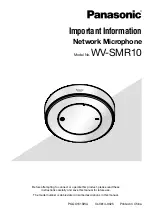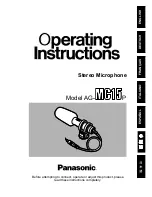
3-3
2. Perform a pumping mechanism integrity /extension spring (HM10)
integrity test by closing the IV set patient side tube clamp while the
pump is operating in the Pump mode. ( Any iRadimed Series 1000
IV set may be used for this test) Set the occlusion pressure to
maximum at 10 PSI. If the springs are not pulling the pumping
‘fingers’ tightly enough over the IV set tube to maintain proper
closure or ‘pinch off’ of the tubing, or there is another failure
resulting in weak ‘pinch off’, the channel will not reach occlusion
pressure due to back flow leakage. This may manifest also a ‘free
flow’ of IV fluids into an attached patient. Reference the 3860+ MR
Infusion Pump Assembly drawing on page 5-4 and inspect the pump
assembly. This basic test should be done any time service has been
performed as well as for all PM’s.
3. Inspect the exterior case, front and rear, for holes, cracks,
scratches, spilling, broken or damaged controls, missing
components and/or screws (3860+ and 3861). Carefully inspect the
areas where the hinge pin passes through the chassis and door for
any signs of cracking or excessive wear or corrosion.
4. Inspect the displays for scratches or cracks, missing dots or other
readability problems (3860+ and 3865).
5. Ensure the pumping chamber door (AS112 or AS113) fits flush with
the case at the top, bottom, and sides (3860+ and 3861), and can
be latched securely closed.
Ensure the pumping chamber door
opens and closes freely without any friction or resistance. Verify the
retaining screw at the bottom of the pumping chamber door axle is
securing in place. Verify the brass pumping chamber door axle is
free of any corrosion or material that prevents free movement of the
pumping chamber door.
6. Check the door handle/cam (AS112 or AS113 to AS104) lock for
ease of operation and flush fit with door when latched (3860+ and
3861). When open, check that the clamp handle is held up at
approximately a 45 degree angle to the door and releases smoothly
as the door touches the chassis face upon closing, with the clamp
releasing and moving downward smoothly.
7. Inspect the bubble detector (HE09/HE09A) and test its ability to
detect fluid. Install an IV set with no fluid into the pump and run at
a rate of 10ml/Hr. The pump should indicate Air In Line and alarm
within 50 seconds. Note: the pump software must ‘see’ a tube with
fluid to pass the power on bubble detector test to allow further
pump operation. Simply place a small segment of tubing with fluid
into the bubble detector if prompted to “ Remove Set” to satisfy this
bubble detector power on test.
8. Inspect the Flo-Stop holder (3860+IVP1047/AS120) recess for
damage, obstructions, or fluid spillage. Some drugs can attack the
plastic and weaken the materials, replace this part as needed. The
IV set should remain seated within the Flo-Stop holder when the
door is opened and no “Check Door” alarm should occur. (3860+
and 3861).
9. Inspect upper door clamp latch paw (IVP1038) for damage or wear.
10. Install an iRadimed 1056 administration set primed and flushed
with water, ensure the Flo-Stop assembly seats correctly and the
door closes and latches properly (3860+ and 3861). Set must
remain seated as door clamp is opened and flow stop slide of the IV
set is pulled out to the flow close position.
11. Actuate each of the keypad controls on the front panel to ensure
proper operation (3860+ and 3865)(see Figure 3-1 in the 1138
Operation Manual for location of controls).
Summary of Contents for MRidium 3860
Page 2: ......
Page 4: ...1 4...
Page 8: ...iv...
Page 34: ...1 26...
Page 50: ...2 16...
Page 71: ...3 21 Figure 3 2...
Page 88: ...3 38 Figure B Too Much Taper Raw Curve 3860 61 Figure C Not Enough Taper Raw Curve 3860 61...
Page 95: ...3 45 Return the Stop Cock to the Test Position...
Page 106: ...4 2 Figure 4 1...
















































